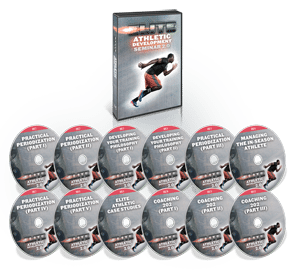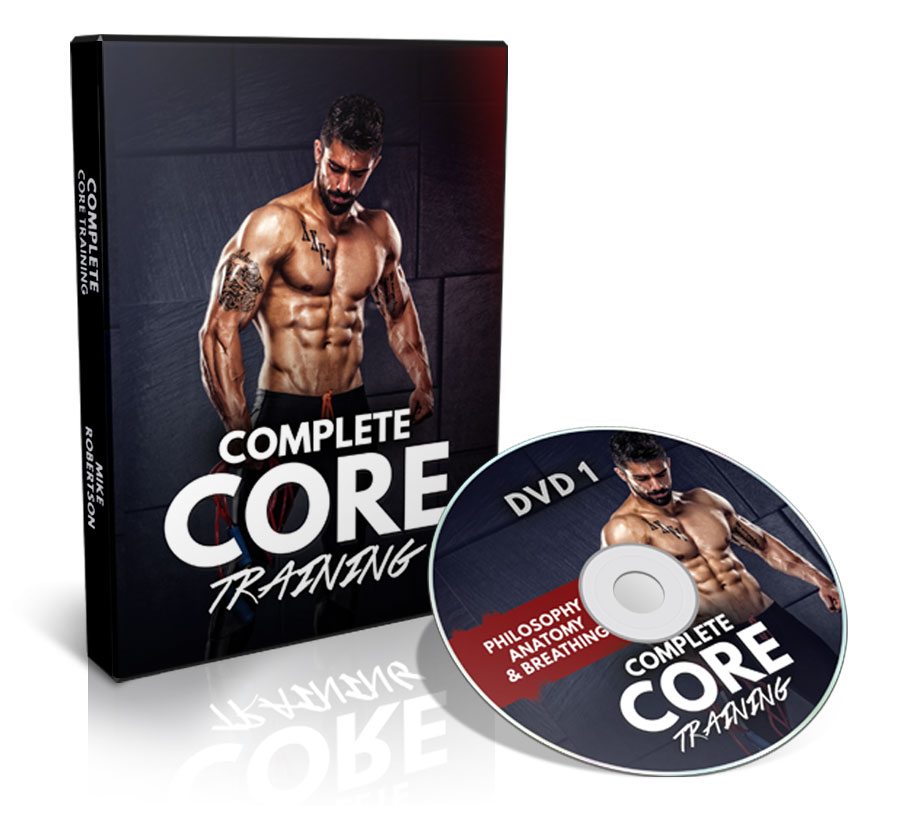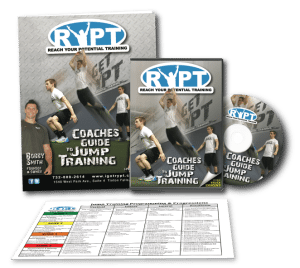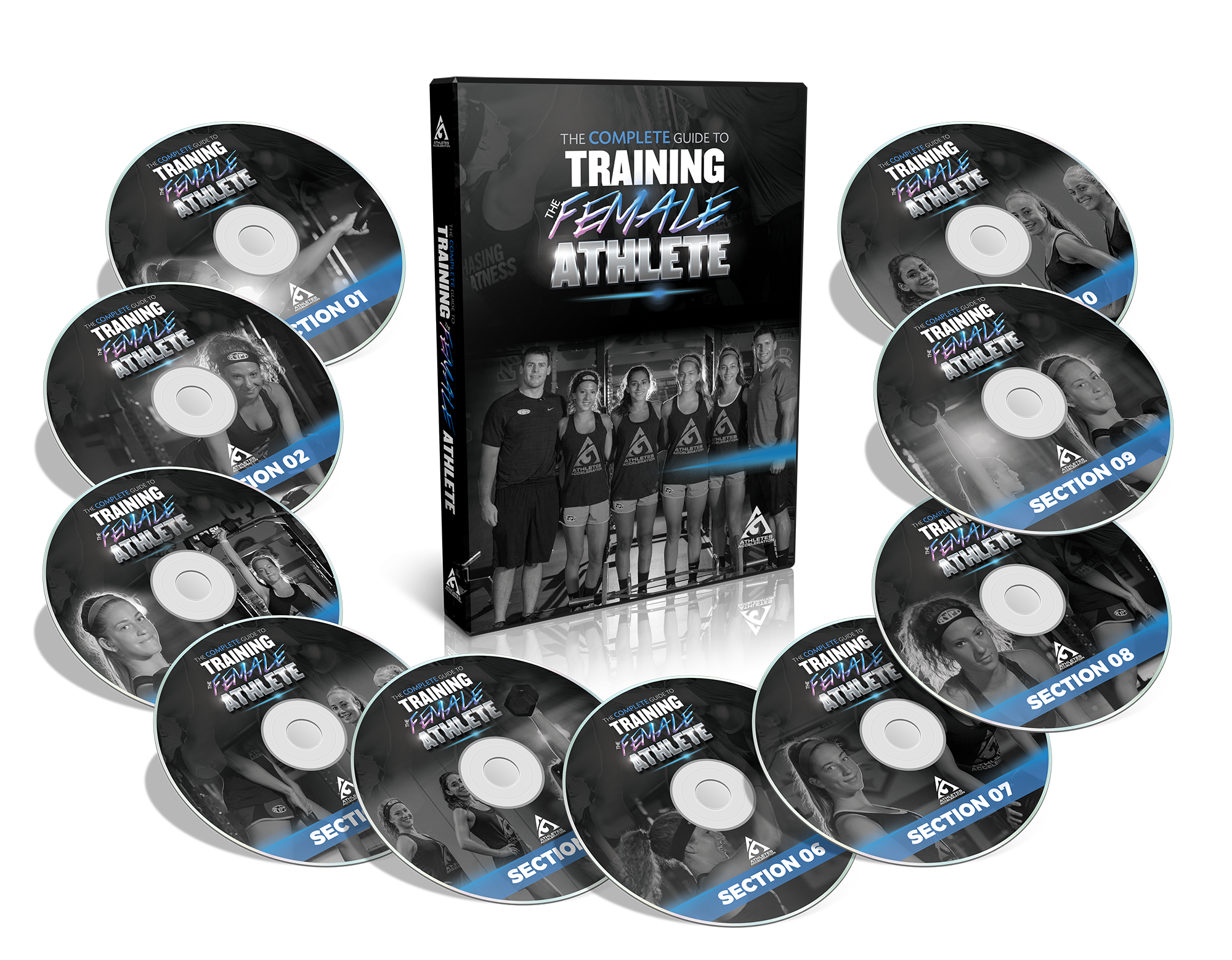Long Term Athletic Development – Part 2
Mike Snyder, CSCS, FMSC
Head Strength and Conditioning Coach, Trinity High School
In part 1 of my Long Term Athletic Development series, I covered how we implement the first phase of our Block Zero program at Trinity High School. In this article I will discuss the three main training emphases of Phase II Block Zero development.
In Kentucky, at the high school level we have a state mandated “Dead Period”. This is a block of time in the middle of the summer where we can have zero contact with athletes from our school. I use this period to serve as our transition from phase 1 of our Block Zero plan to phase 2.
When the athletes come back from the break we review the concepts we learned in the first phase during the initial session. Again, those are mainly crawling, rocking, rolling and of course our breathing. On the second session, we officially begin phase 2. Each training session during this phase is broken down in to 3 separate sections.
Section 1 – The Athletic Position
The first section is focused on establishing the Athletic Position (AP) (think Linebacker’s stance in football or an Infielder’s stance in baseball). With each movement we have our athletes return to the AP between each rep. We have them start each rep from this position as opposed to having them string together multiple reps in succession as a way of drilling this position in to their heads. We expect them to be able to get in to this position in their sleep.
Generally, if they have a solid understanding of this position and how to move from it, when we transition them to a loaded movement (Trap Bar DL or Goblet Squat) it looks pretty solid. If performed correctly and we are satisfied with how they did we will only perform one set of each movement in the first section.
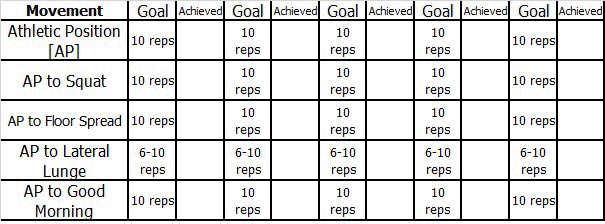
Section 2 – Isometric Training
The second section of the Block Zero Phase II program focuses on building isometric strength. Each movement is performed for 5-10 reps of 5 seconds. I prefer multiple reps with shorter isometric holds to help ensure quality of movement. This circuit will last for 2-3 rounds with water breaks in between each round. By the end of 3 rounds, the athletes are absolutely smoked. If getting your athletes a tough training session is part of what you want I can assure you that the isometrics achieve this.
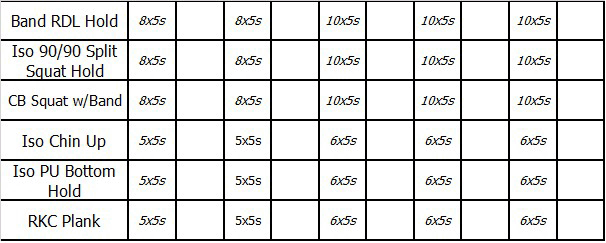
We do not move our athletes off of the second section until we are satisfied with their movements. When making the decision on when to progress them we are basing it off of how they look at the end of the 2nd and 3rd rounds. Once their final reps look like their first reps we are ready to move on. This may be after 2 sessions. This may be after 6 or 7 sessions. The current group of incoming freshmen that we have went 5 training sessions before I thought they were ready to move on. I would rather do one too many sessions in section 2 than have them go to section 3 one session too soon.
Section 2 – Relative Strength
The final section of our Phase II training session is focused on Relative Strength. Many of the movements they performed in section 2 for isometric holds are now being performed for reps in section 3. As a way to control the movements and keep everyone moving together we do them all with tempo. For example, we perform our RDL with an empty barbell on a 5 count. Our athletes start tall and descend on a 5 count to the bottom of the RDL and on a coach’s cue they come up.
We are essentially performing eccentrics in this section. This holds true for all movements except the Partner Paloff Hold and the Push Up. With the Paloff hold they are doing a Paloff Press with a band and partner. They will hold the rep for 20 seconds and rest for 5 seconds. With the Push Up they will perform as many reps as they can in the 20 seconds. Our athletes will perform 2-3 sets of a movement before moving on to the next one.
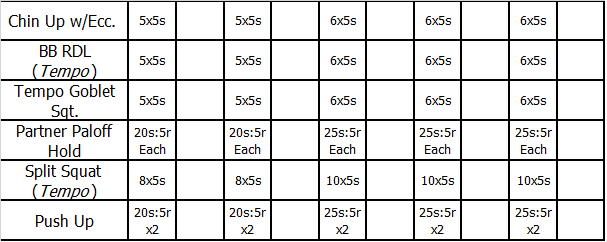
Time permitting when we are finished with everything we will begin to perform technique work on our foundation movements. For my incoming kid it is the Trap Bar DL, Goblet Sqt and Overhead Press. For my returning varsity athletes their movements are the Trap Bar DL, Front Squat and Overhead Press.
Training Session Organizational Notes
Typically the groups that we train are anywhere from 20 to 60 plus athletes with our varsity football team. To make this run in an orderly fashion we number both our athletes and the movements. Before each session the athletes line up 2×2 outside of our weight room. As they enter, they are given a number. It is either 1 thru 3 or 1 thru 6 depending on how we want separate the movements. They will start at the movement that corresponds with their number and rotate from there. This is determined by the size of the group and the equipment available. Doing this allows for the athletes to move between each movement freely and efficiently. This has allowed us to achieve a high quality of work while still pushing the tempo at which they work.
What I’ve laid out in these two articles is essentially everything we do at Trinity to prepare our athletes for barbell training. This is a system that works very well for us and has led to what I think at the high school level is pretty solid lifting. Our kids are safe and they understand the importance of learning the basics before moving on to bigger things. Hopefully you can take one or two things from this and implement them within your own program.
Note:
Phase II is also where I begin our varsity athletes when they resume training for the off-season. Outside of a very brief review, we do not spend much time covering phase 1 of our Block Zero program with them as they have already gone thru it.
Embrace The Process.
Please feel free to contact me directly with any questions or comments.
michael.snyder35@gmail.com


